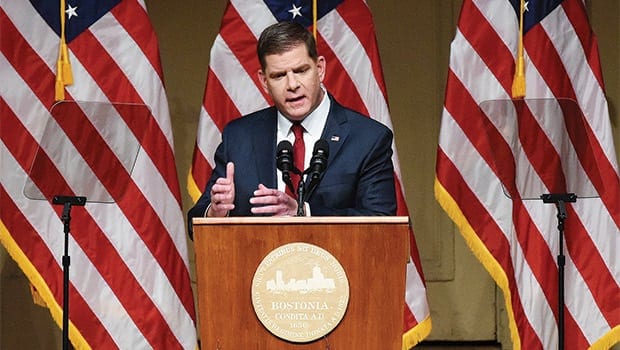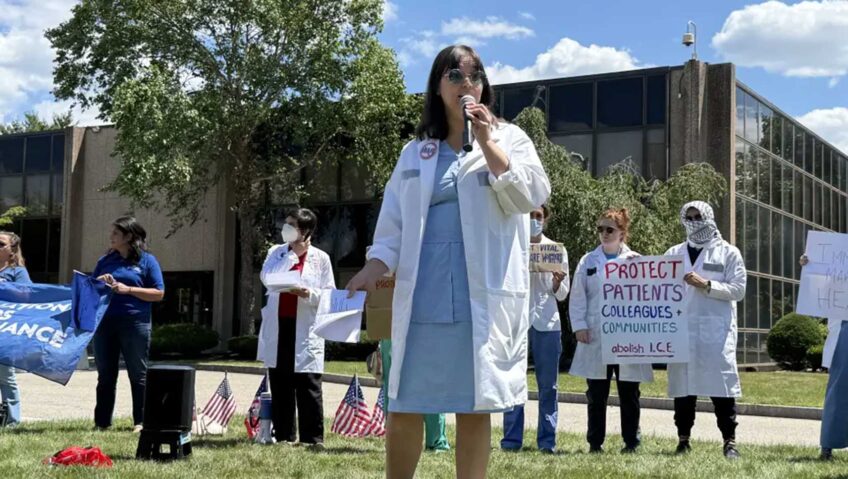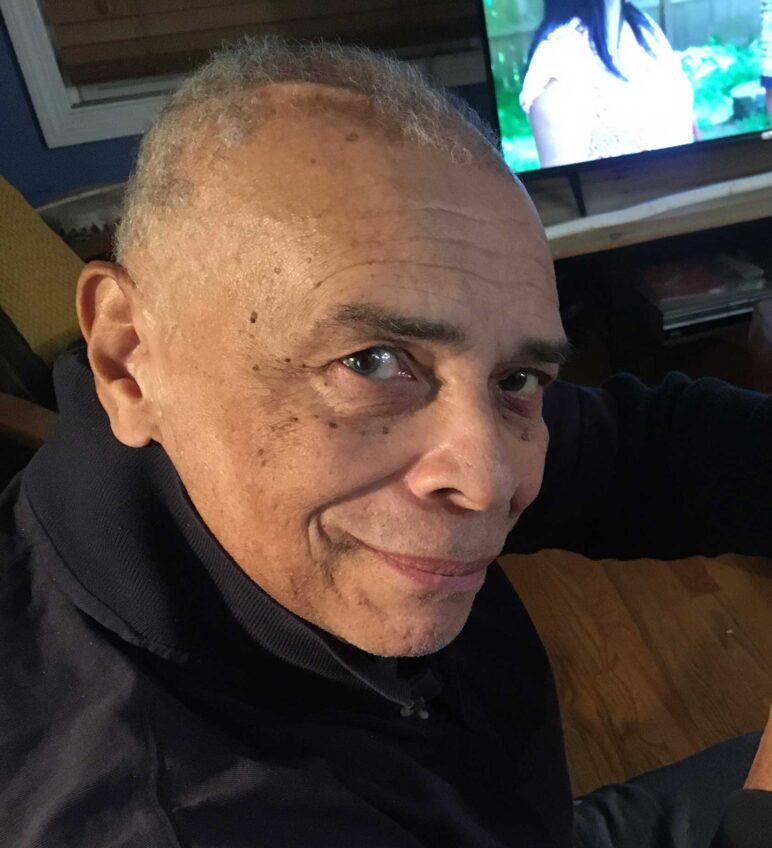Mayor Walsh plans ways to hike school funding
State of the City address highlights PreK, reimbursement reform, buildings

In his State of the City speech Mayor Martin Walsh promised to file significant education funding legislation and direct $1 billion to school facilities.
“Boston is entering a new era of school investment,” Walsh said. “We will create high quality 21st century classrooms for every student, connected to every neighborhood, college and workplace in our city.”

Author: Photo: Mayor’s Office photo by Don HarneyMayor Martin Walsh delivers remarks at the State of the City event at Boston Symphony Hall.
Walsh said his term thus far has been marked by highlights such as affordable housing creation, promotion of a startup sector, redress for homeless veterans, recruitment of high-profile companies and reduction in homicides.
“My plan is clear. It’s good jobs in every neighborhood; massive investments in affordable housing and open space; infrastructure upgrades to fix traffic; free high quality pre-kindergarten for all; $1 billion for new schools; and doubling down on community-driven public safety,” Walsh said.
Education package
Walsh’s education proposals aim to direct more funding to the city’s students. One message that seemed woven throughout: Boston generates a lot of money and Boston students need a lot of money — far more than they have been receiving. Several proposals appeared designed to keep more state revenue generated within Boston from being directed to other parts of the state and instead invested into advancing local education efforts.
For example, one proposal would redirect some tourism tax revenue generated within city limits that normally goes into the state Convention Center Fund. In the past, according to the Walsh administration, the state has dipped into this pool to help balance the budget. Instead, funds would be redirected into financing pre-K seats for all Boston four-year-olds.
Another theme: a well-earned doubt that the state will come through on charter reimbursement obligations. A bill from Sen. Sal DiDomencio would redesign the reimbursement schedule, truncating it from five to three years. Under the current arrangement, the state reimburses school districts over a several year period for a portion of their per-pupil spending that is diverted to charters. DiDomenico’s proposal would require that the state cover 100 percent of the funding in a student’s first year, 50 percent in the second and 25 percent in the third, with the school district paying the difference.
Similarly, a bill from Rep. Adrian Madaro would change how charter schools receive financial support for new buildings. Instead of receiving facility funding from the city (which then is reimbursed by the state), charter schools would turn to the state’s School Building Authority for money.
A bill sponsored by Sen. William Brownsberger and Rep. Daniel Ryan requires charter schools to take some responsibility for their transportation costs. Districts currently pay for transit but have no control over charter school stop and start times, preventing more efficient bus routing. If the proposal is implemented, charter schools would pick up 50 percent of the transportation bill when they and district schools cannot agree over scheduling, and charter schools would have to pay for any third-party transportation providers they choose to use.
Sen. Sonia Chang-Diaz sponsored a bill that revises the formula for calculating state education aid to communities such as Boston that spend beyond the state assessment of a minimally acceptable school budget.
“If we truly care about closing opportunity gaps and ensuring that every child in our state has access to a great education, then it’s time we put our money where our mouth is,” Chang-Diaz said in a statement. “Our schools are buckling under the weight of years of chronic underfunding, and this bill will reverse that, bringing our funding formula into the 21st century.”
$1 billion to BuildBPS
The city will spend up to $1 billion on new school buildings over the next ten years, Walsh announced. The building project, the culmination of the city’s BuildBPS process, will reflect the city’s new educational priorities, according to the city’s education chief, Rahn Dorsey.
“We want to make sure buildings are responsive to the ways we want to teach and learn,” he said during a press briefing before the speech.
Dorsey said the school department will engage stakeholders in the decision-making process about where new schools are built and when.
BPS currently has 126 buildings, more than half of which were built before World War II.
“There are a great many elementary schools that don’t have space for art or science,” Dorsey said.
At the same time, schools are unevenly distributed in the city, according to Dorsey.
“Capacity is very unevenly distributed across the district,” he said.
The BuildBPS process, which began last year, examined the district’s plans for teaching and learning, a projection of future demographic trends in Boston, an analysis of long-term costs for building maintenance and modernization and an assessment of the conditions and uses of BPS buildings. The buildings assessment, initially carried out in a weeks-long process by the firm McKinsey and Associates, was widely panned by parents who questioned the firm’s assertion that BPS had excess capacity of 39,000 seats and its advice to close 30 to 50 buildings.
For its current assessment of its buildings, which has not yet been released to the public, BPS employed the Cambridge-based firm Symmes Maini & McKee Associates. Rather than discussing possible school closures, school officials told reporters they would replace existing buildings, temporarily relocating students during the construction process.
Dorsey stressed that parents, students and other interested parties would play a role in the decision-making process.
“We will have to dig in on a neighborhood-by-neighborhood basis,” he said. “We do want to make sure we engage stakeholders.”
Fairmount jobs, Chinatown library
Walsh integrated policy goals on public transit, economic stimulation and housing, telling reporters that transit will facilitate job access and better jobs will allow people to push back against rent pressures. Walsh pointed to the decision of businesses such as Reebok and G.E. to headquarter in Boston as a sign of success that increases employment opportunities. He declared commitment to expand job development citywide, highlighting the Fairmount corridor as one target area. He told the Banner it is a prime area for bringing manufacturing work.
Walsh also alluded to better train service on the Fairmount Line, although he did not give specifics.
Upcoming projects included long term objectives, such as making the city carbon neutral by 2050, and shorter term ones, such as restoring Chinatown’s long absent public library service. Residents have been advocating for a Chinatown library branch since the city demolished it in 1956, and reopening a branch was among Walsh’s 2013 campaign promises.
Diversity and unity
During his campaign launch last week, mayoral rival Tito Jackson accused Walsh of being a mayor for downtown only and of failing to make meaningful strides in bringing diversity to City Hall or ending racial and gender economic gaps. However, during his speech Walsh celebrated the employer collaboration behind a recent gender wage report and said he had boosted diversity.
“We are a city that believes every single person deserves an equal chance to thrive,” Walsh said, “We made city government’s leadership and workforce more reflective of our diversity than it’s ever been.”
He praised the Boston Police Department’s cadet program for creating a fully-local cadet class comprising 70 percent people of color. Given the small size of the cadet class, some have called it a drop-in-the-bucket effort.
Walsh ended the night promising to protect Boston residents, including immigrants and people with disabilities, regardless of the national political scene.
“With trust in government at an all-time low, we [in Boston] prove that government can work for people,” Walsh said. “Whatever happens nationally, I will fight for our values. I will fight for our families. … I will fight for good jobs, public schools and affordable housing, for racial justice and equal rights.”
Yawu Miller contributed to this article.






